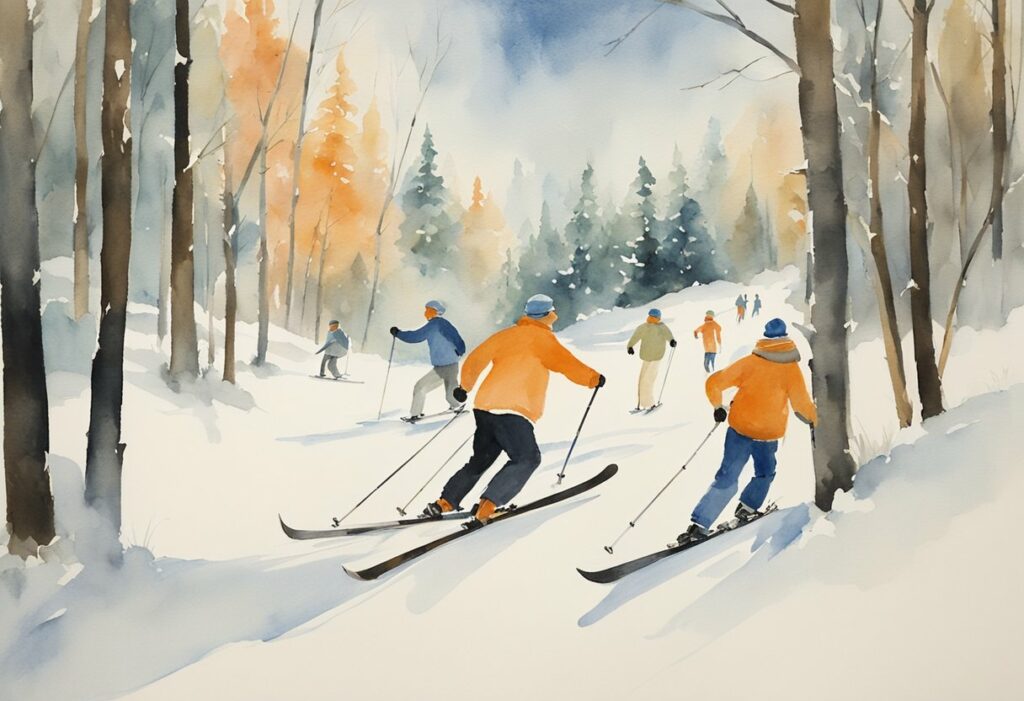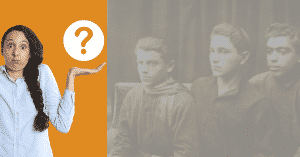Engaging in winter sports isn’t reserved for the young. Seniors are embracing the winter wonderland and having fun.
Whether it’s a gentle walk in the snow or a more adventurous activity, there are plenty of ways to keep moving even when the temperature drops.
Why stay inside when you can experience the joy of winter sports?
1) Snowshoeing
Snowshoeing is a delightful and accessible winter sport for active seniors.
Imagine walking through crisp, snowy landscapes, breathing in the fresh air. It’s gentle on your joints, making it perfect if you have arthritis or similar issues.
You don’t need to be an athlete to enjoy snowshoeing. Most people who can walk can easily pick it up.
Hulda Crooks, an inspiring woman, snowshoed up Mt. Whitney at age 91. Think about that!
Safety is crucial. Wearing the right gear, like warm, breathable gloves and sturdy boots, keeps the cold at bay.
Senior groups often organize snowshoeing events. Joining one is a fantastic way to stay active and meet like-minded friends.
Snowshoeing trails are everywhere. National and state parks often turn hiking trails into snowshoe paths during winter.
Even ski resorts have designated areas for snowshoeing. It’s an inexpensive way to enjoy winter, especially compared to skiing or other winter sports.
Snowshoeing offers endless benefits. It boosts cardiovascular health and strengthens muscles. Plus, it’s an excellent opportunity to connect with nature.
Imagine the quiet, peaceful landscapes you’ll discover. Feeling adventurous yet?
Remember, starting slow is key. Pace yourself and take breaks as needed.
The beauty of snowshoeing is that you set your own pace, making it enjoyable and stress-free.
Ready to try it? Grab your gear!
2) Cross-Country Skiing
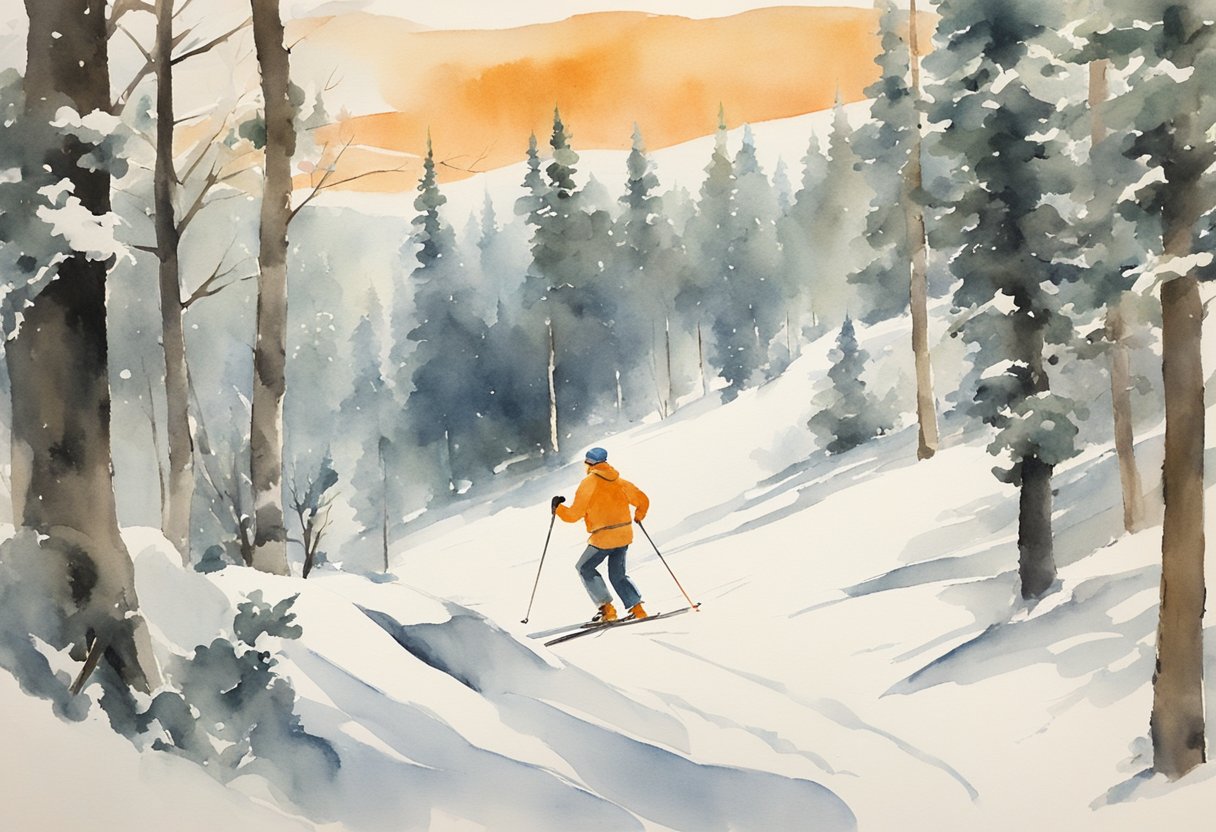
Dr. Laura Whitman always loved the quiet beauty of snow-covered trails. She recalls the peace it brings, like a silent meditation in motion. Cross-country skiing is more than just a workout; it’s a full-body experience.
This low-impact sport works the whole body, from legs to arms. Despite this, it’s gentle on the joints, making it ideal for seniors.
It’s like swimming on land, as every muscle engages but without the harsh impact on your knees.
Skiers aged 70 or older can often find free access to ski trails, as seen at Lone Mountain Ranch in Big Sky, MT.
Even those aged 60-69 can enjoy significant discounts on trail passes at places like Bear Valley Nordic Center.
Imagine gliding through a snowy forest, breathing in crisp winter air. It’s not just exercise; it’s therapy.
A study indicated that the aerobic nature of cross-country skiing boosts mental well-being.
Looking for tips?
Experts suggest 75 minutes of vigorous or moderate-intensity skiing weekly. It’s enough to get the heart pumping while savoring the scenic beauty.
Are you ready to hit the trails?
3) Winter Hiking
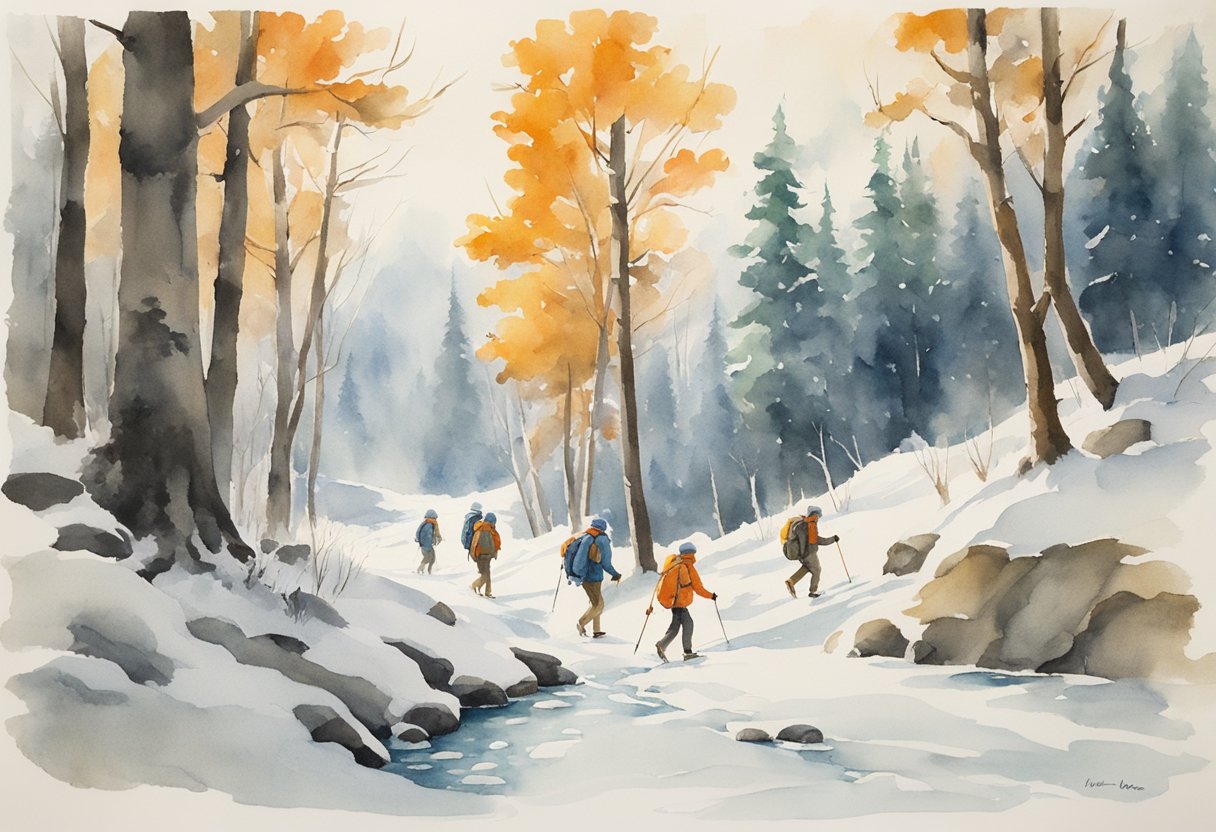
Winter hiking offers a great way to stay active and enjoy the beauty of nature.
It lets you experience the crisp air and serene landscapes covered in snow. Plus, it’s a fantastic workout.
Choosing the proper trail is key. Look for trails with gentle slopes and avoid steep or icy paths.
Some parks and trails are groomed specifically for winter hiking, making it safer and more enjoyable.
Always dress in layers for winter hiking.
Start with a moisture-wicking base layer, add an insulating layer like fleece, and top it off with a waterproof and windproof jacket. Don’t forget a hat and gloves!
Footwear is crucial. Wear insulated, water-resistant boots with good traction.
Some hikers use crampons or microspikes for added grip on icy trails.
Bring trekking poles for stability. They help with balance and reduce strain on joints.
Dr. Laura Whitman swears by them, saying they’ve made her feel more secure on snowy paths.
Hiking in winter can be a refreshing adventure. You get to see nature in a whole new light and stay fit. Who knew staying active could be this enjoyable?
4) Ice Fishing
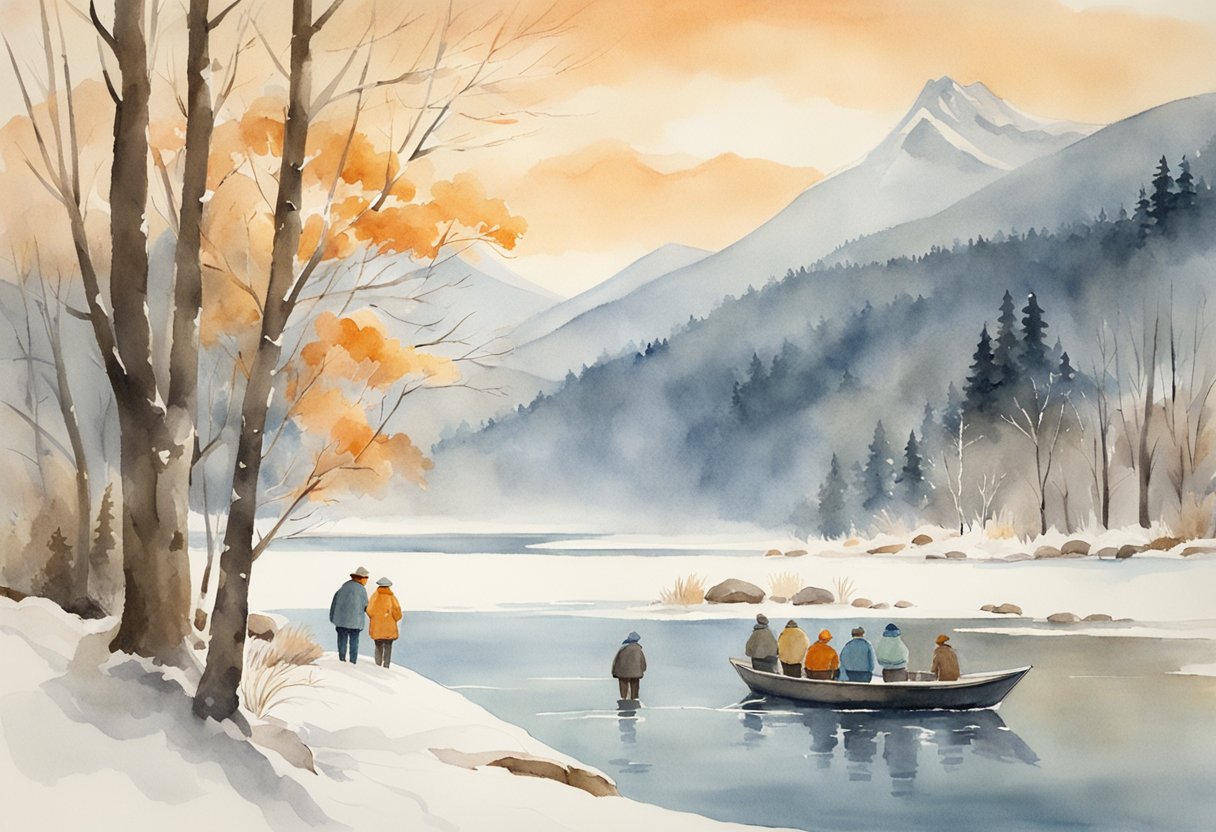
Have you ever wondered what makes ice fishing so special?
It’s about more than just the catch. Imagine sitting beside a small hole in the ice, the air crisp and clean. There’s a unique peace you only find out there on the frozen lake.
Ice fishing can be a great social activity. Many seniors head out with friends or join groups that share the same interest.
Camaraderie builds as you trade stories and tips while waiting for that tug on the line.
For those new to ice fishing, start simple. You don’t need fancy gear. A basic rod, some bait, and an ice auger will get you started.
Warm clothes are a must. It’s all about layers to keep comfortable while waiting for the fish to bite.
Safety is key out on the ice. Always check the thickness of the ice before setting up.
Generally, 4 inches of clear ice is safe for people. Carrying ice picks can be a lifesaver in case of emergencies.
Never go alone and always let someone know where you are.
Ice fishing also keeps the mind active.
It’s a game of patience and strategy, perfect for keeping those cognitive skills sharp.
For a change, it’s about enjoying the moment, whether you catch a fish or not.
Enjoying the beauty of the winter landscape is part of the charm.
Give it a try. The serene winter landscape might just surprise you.
5) Snowmobiling
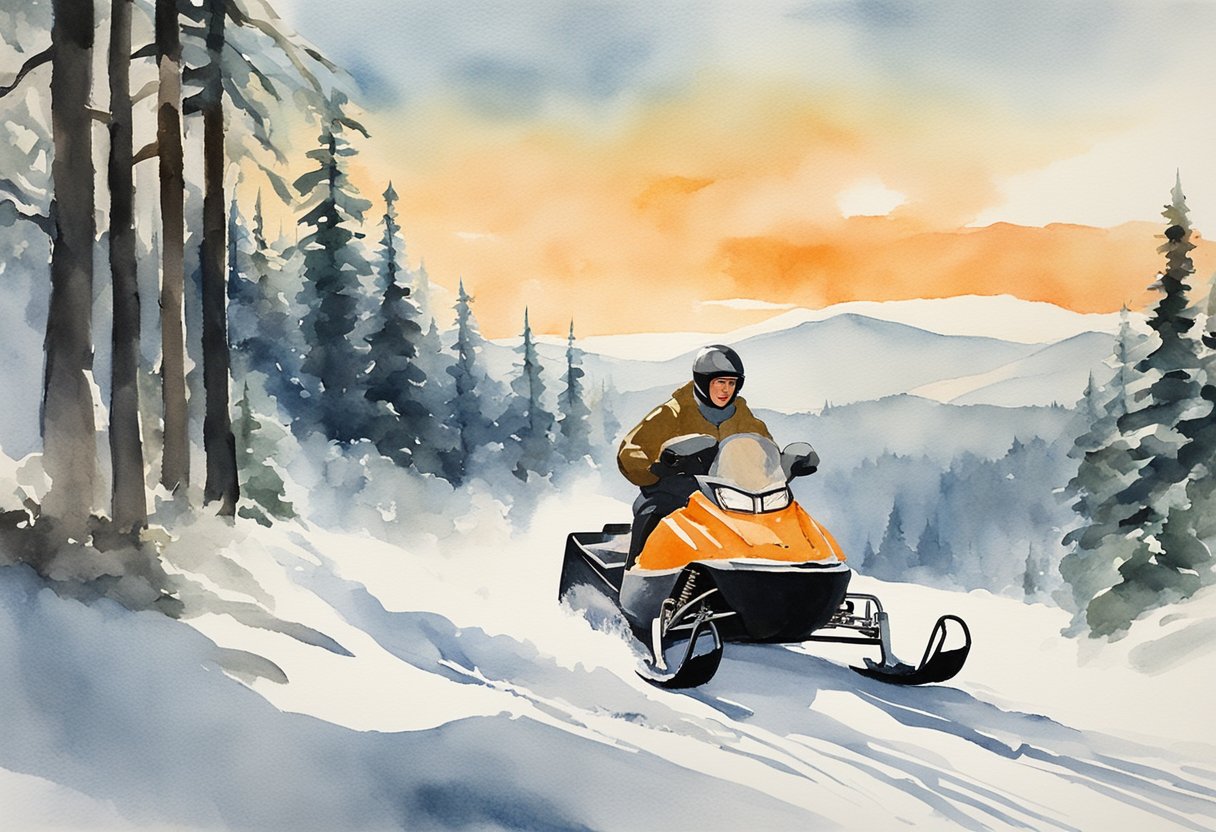
Snowmobiling offers a thrilling outdoor experience for seniors. Imagine gliding over snowy landscapes, the crisp winter air invigorating you. Can you feel the excitement?
It’s an activity that keeps you active and engaged with nature.
Snowmobiling doesn’t require extreme physical effort. Those with conditions like arthritis can comfortably ride while enjoying the beautiful scenery.
Remember to dress warmly and wear helmets for safety. Always follow the trail guidelines to ensure a secure ride.
Dr. Laura Whitman, a seasoned snowmobiler, emphasizes the importance of starting slow.
Don’t rush; get used to the machine’s controls and speed. This way, you can build confidence gradually, making it a fun and safe adventure.
Are you worried about getting tired?
Snowmobile tours often include breaks, allowing you to rest and socialize with fellow riders.
It’s not just a sport; it’s a community activity. Connect with others and share your experiences.
If you’re looking for a new winter hobby, snowmobiling is worth considering.
It’s not just about speed; it’s about experiencing winter in a unique and exciting way.
So, get out there, feel the wind on your face, and enjoy the ride!
6) Curling
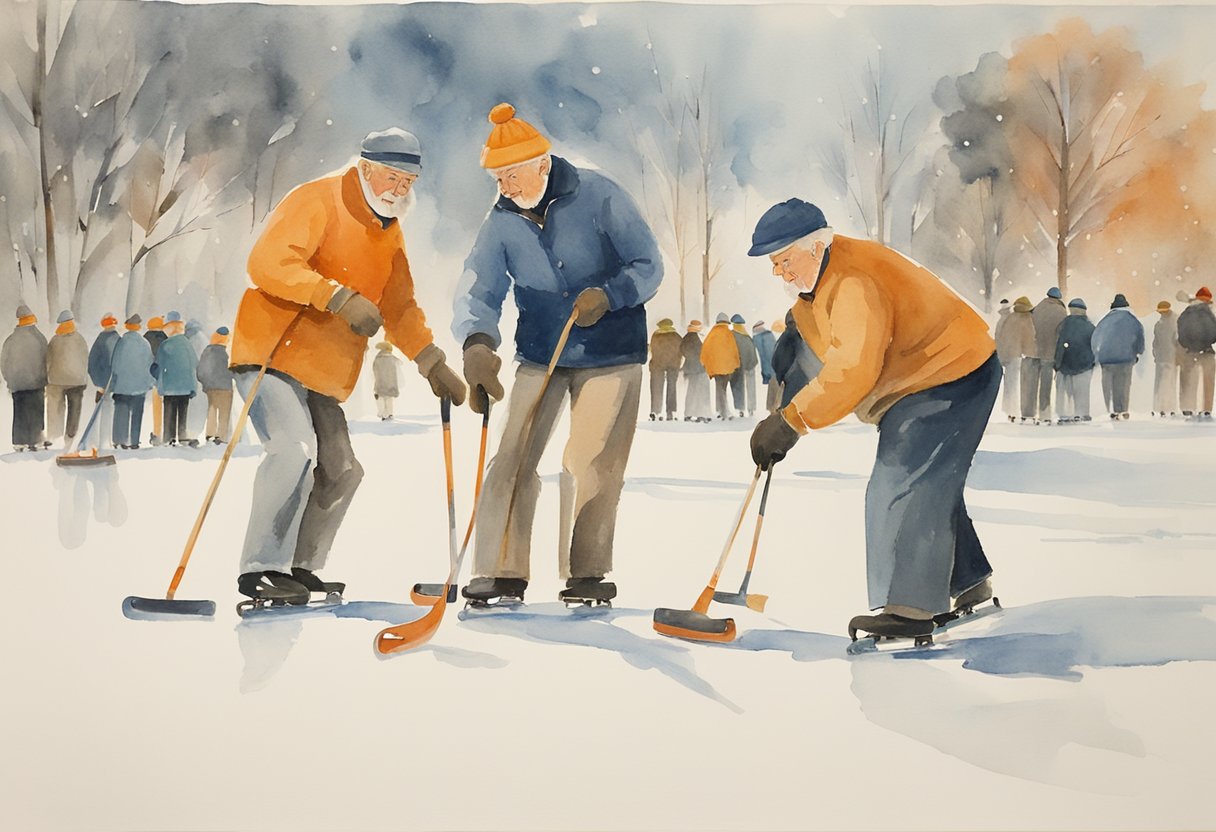
Can you imagine sliding stones across the ice? That’s curling for you. It’s similar to shuffleboard but on ice.
Seniors can get quite a kick out of this sport. It’s fun and engaging. Plus, you’re not just standing around; you’re moving those stones to hit targets.
Curling offers a great workout with low impact. It’s perfect for seniors who need gentle exercise.
Think about it: you’re improving balance, coordination, and even strength. The stones, while not heavy, require a bit of effort to move.
Not everyone can get down to ice level. No problem! There are pusher sticks designed to help.
They make it easy to engage without bending down. This is a game-changer for those with limited flexibility.
Curling can be played indoors. No need to worry about the winter cold.
Many senior centers have made adaptations like FloorCurl, which uses iceless curling equipment. This allows for the same fun without the icy setup.
Engaging in curling means more than just physical activity. It’s social too.
Seniors can join local clubs or teams, making new friends along the way. This social interaction is vital for mental health and wellbeing.
Even beginners can enjoy curling. It’s easy to learn and doesn’t require previous experience.
Just give it a try. You might find a new favorite pastime. Curling can keep you active and happy during those long winter months.
7) Snow Yoga
Snow yoga is a unique way to stay active during the winter months.
Imagine stepping out into a serene, snow-covered landscape. The crisp air fills your lungs, and the tranquility of the scene sets the stage for a rejuvenating yoga session.
Because of the cold, it demands more from your muscles, keeping you warm and engaged.
Have you ever tried balancing on one leg in the snow? It’s a challenge, but it strengthens your core and improves your balance.
Many find the snowy environment calming, a perfect backdrop for deeper breathing and mindfulness.
Yoga poses, like downward dog or child’s pose, feel different on snowy ground, offering new sensations and balance tests.
You might wonder, is it safe? Yes, with some precautions.
Wear layers to stay warm and ensure you have a non-slip mat.
The mat helps maintain stability on potentially slippery snow.
Listen to your body and don’t push too hard—snow yoga should feel invigorating, not exhausting.
Feeling adventurous? Snow yoga can also enhance your connection with nature.
Embrace the peaceful sounds of winter, the crunch of snow beneath your feet.
It’s a delightful change from indoor exercise routines. Try it solo or with friends for added fun and social interaction.
8) Horse-Drawn Sleigh Rides
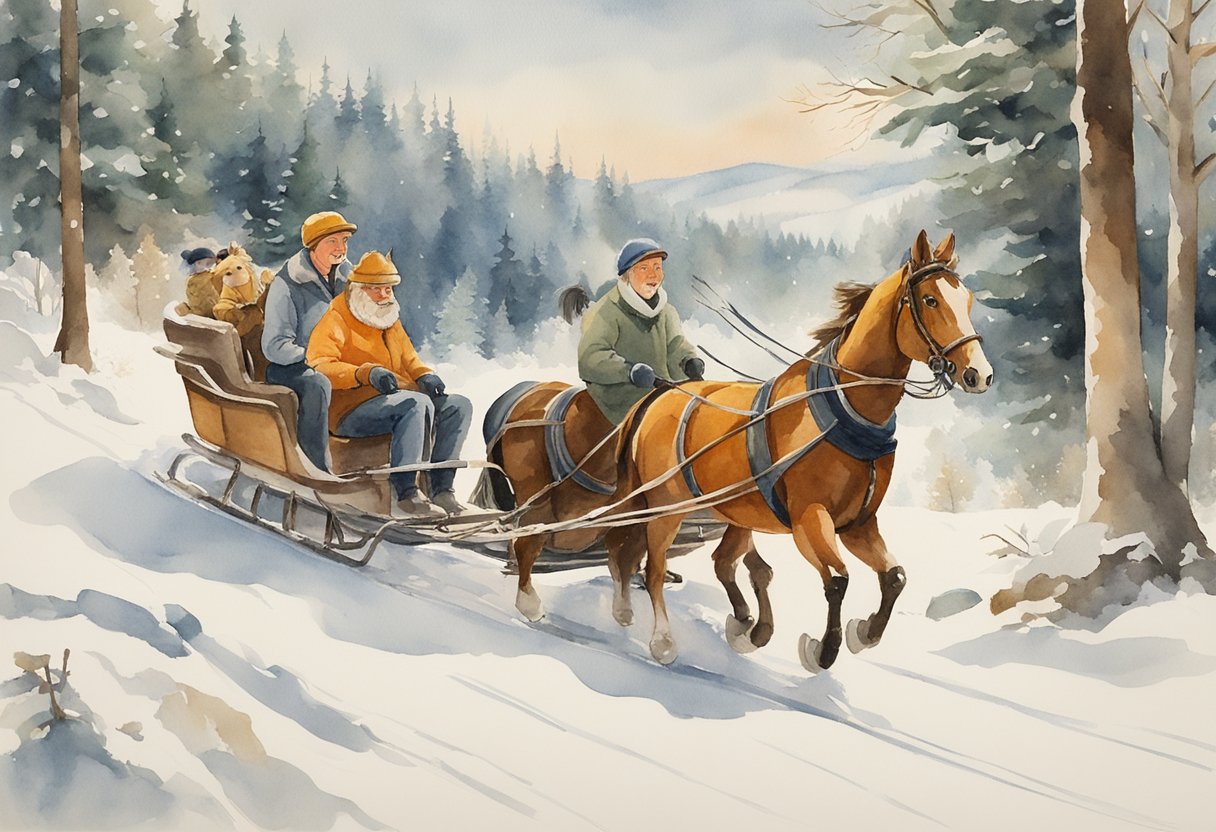
Imagine the crisp winter air touching your cheeks as you glide through snowy landscapes.
Horse-drawn sleigh rides are a charming winter activity that suits elderly, active seniors perfectly. They offer both relaxation and a taste of adventure. Plus, there’s no need for strenuous physical activity, making it an ideal option.
In Hillman, Michigan, you can enjoy tours that take you through beautiful winter scenes.
There’s something nostalgic and magical about the experience. The calm, rhythmic clip-clop of horse hooves creates a peaceful ambiance. It’s a unique way to enjoy the winter season.
For those near Telluride, Colorado, there are sleigh rides pulled by American draft horses.
These rides combine a scenic route with a delightful meal, making it a memorable evening outing. You’ll feel like you’re part of a cozy winter storybook.
Or perhaps Winterberry Farm is more your style.
This New Hampshire farm offers rides with horses named Nestor and Ginger. The authentic old-fashioned sleighs add a touch of history to your ride. Picture yourself wrapped in a warm blanket, enjoying the serene beauty of nature.
9) Scenic Train Rides
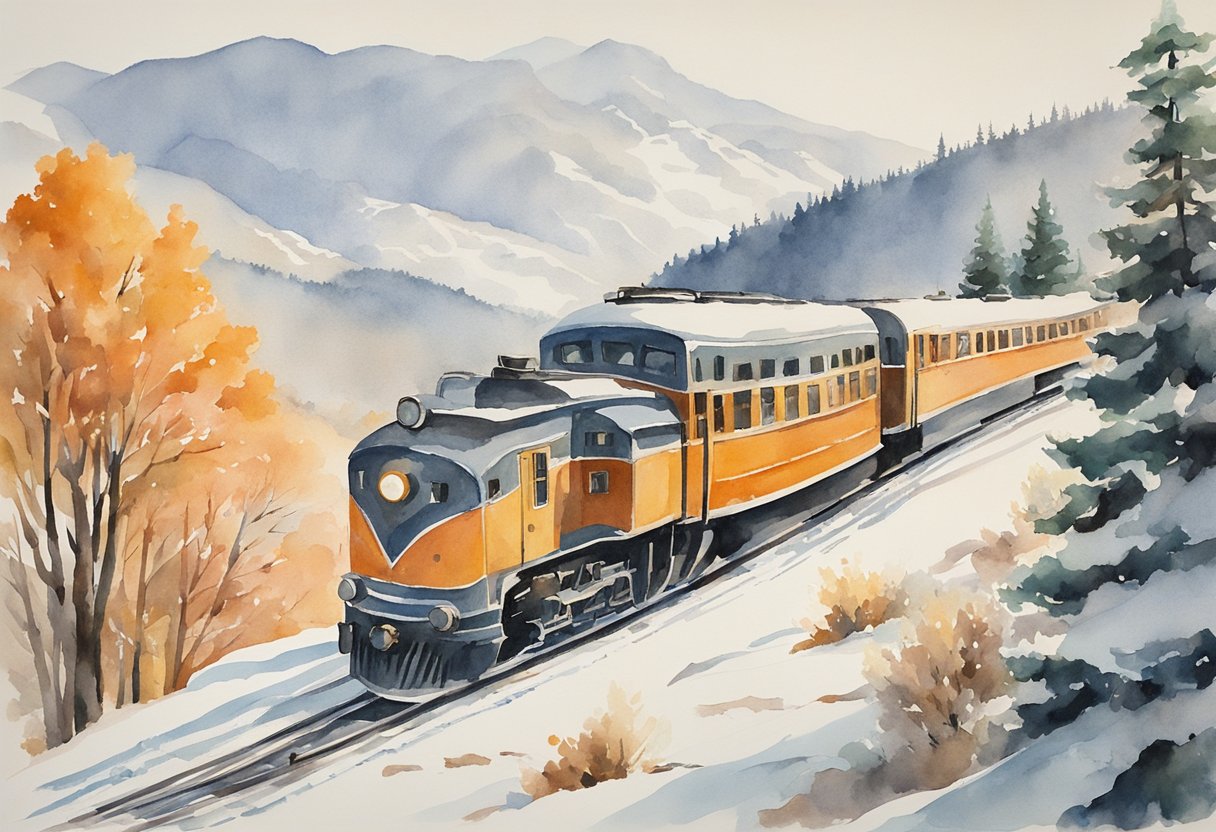
Imagine cozying up in a train, rolling past breathtaking winter landscapes.
Picture it now: snow-covered mountains, frosty trees, and frozen lakes. There’s a certain magic to winter train rides that can’t be found elsewhere.
One great option is the Cascade Canyon Winter Train in Durango, Colorado.
This train takes you through the stunning San Juan National Forest. The view transforms during winter, offering a peaceful and enchanting journey.
Another top pick is the Coast Starlight Train.
Starting in Seattle, this train heads down the West Coast. Passengers get to watch as the snowy landscapes slowly give way to milder, coastal views.
For those seeking a more immersive experience, Amtrak’s Glacier National Park Getaway is ideal.
Departing from Chicago, the ride crosses the North Dakota plains before arriving at Glacier National Park. The park, especially blanketed in snow, is pure magic.
Lastly, don’t miss a chance to see the Northern Lights.
Some winter train rides offer opportunities to view this mesmerizing natural wonder. Imagine sipping hot cocoa while watching the Aurora Borealis dance across the sky.
10) Bird Watching
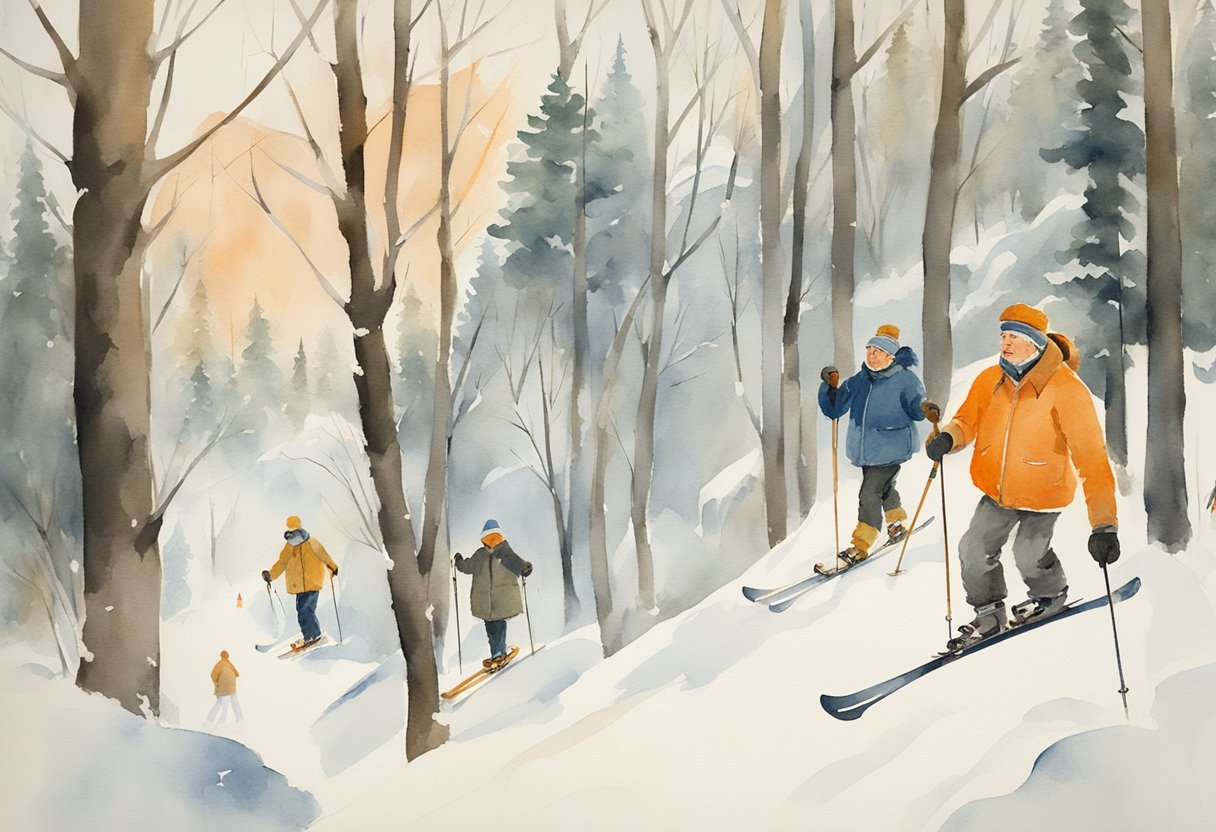
Think snow is just for skiing? Think again. Bird watching in winter can be a magical experience, especially for active seniors.
Picture this: crisp air, quiet woods, and the bright colors of winter birds against a snowy backdrop. It’s peaceful and exhilarating at the same time.
Dr. Laura Whitman loves bird watching. At 65, she finds it rewarding and calming.
You don’t need fancy equipment—just binoculars and a warm coat.
Have you ever seen a cardinal in winter? Its bright red feathers stand out beautifully against the snow. Birds like chickadees and woodpeckers are common and fascinating to spot.
Why is bird watching great for seniors? It’s gentle exercise. Walking outdoors keeps you fit, and the fresh air is invigorating.
It also sharpens the mind. Identifying different birds boosts memory and attentiveness.
Don’t forget the social side. Join a local bird-watching group.
It’s a relaxing way to meet new people. Discussing your latest sightings can turn into a fun, regular outing.
Even in winter, you can set up a feeder near your window. Watching birds from the comfort of your home is just as enjoyable.
Health Benefits of Winter Sports
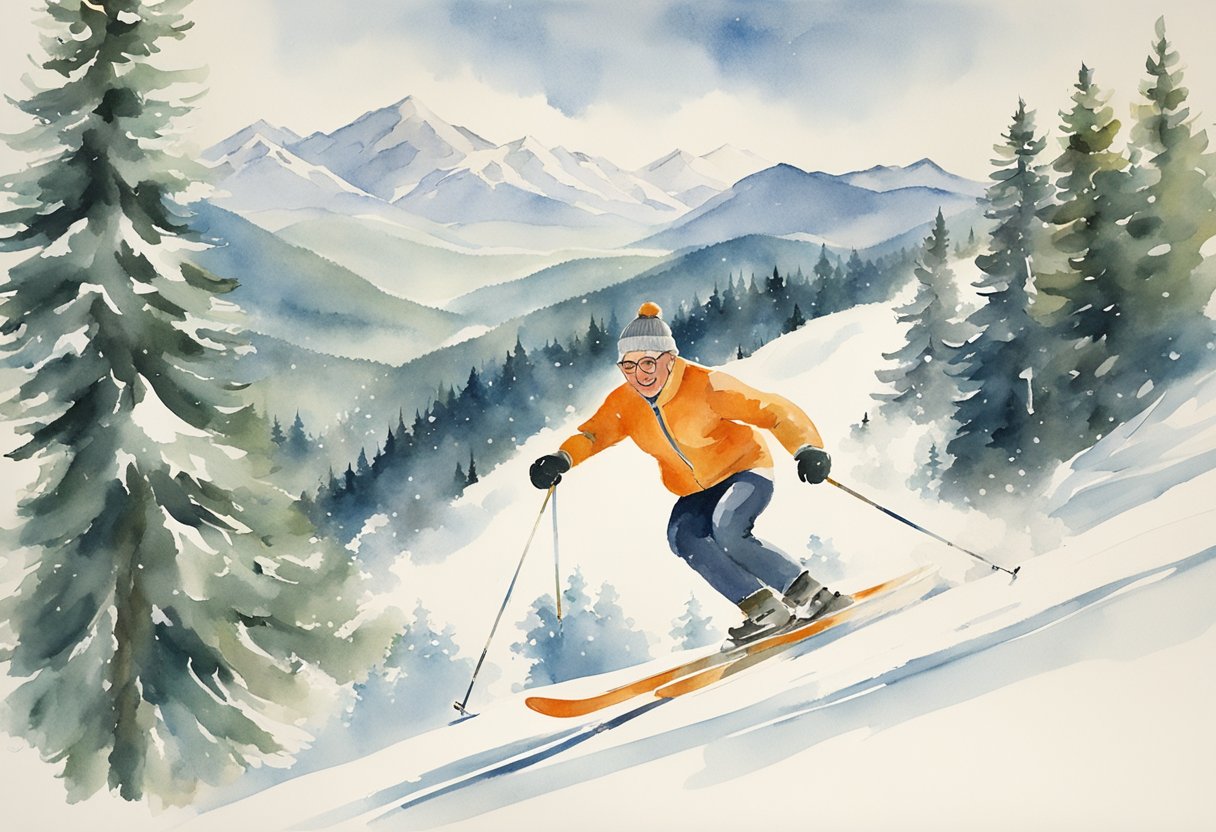
Engaging in winter sports offers numerous health benefits. These activities improve the heart’s health, increase overall mobility, and boost mental well-being.
Cardiovascular Health
Engaging in winter sports can significantly benefit cardiovascular health.
Skiing, snowshoeing, and ice skating increase heart rate and improve circulation. These activities help reduce the risk of heart disease by lowering blood pressure and improving cholesterol levels.
Winter sports also provide an aerobic workout.
Aerobic exercises strengthen the heart and lungs. By pushing themselves in the cold, seniors can achieve a higher level of cardiovascular fitness.
The cold weather itself can also force the heart to work harder to keep the body warm, providing an additional challenge.
Incorporating these activities into a regular routine helps maintain a healthy heart.
Regularly participating in winter sports keeps blood vessels clear, which is crucial for seniors looking to stay active and healthy.
Improved Mobility
Winter sports can greatly enhance mobility for seniors.
Activities like cross-country skiing and walking or hiking in the snow demand balance and coordination, which are crucial for maintaining mobility.
These exercises strengthen muscles and improve joint flexibility, making everyday movements easier and safer.
Snow activities also help in building core strength. A strong core is essential for overall stability.
For aging adults, maintaining muscle mass and flexibility is important in preventing falls and injuries.
Winter exercises focus on large muscle groups, promoting better range of motion and increased strength.
Even simple activities like gentle snowball fights or making snow angels can contribute to improved mobility.
These fun exercises engage different muscle groups, ensuring the whole body gets a workout. Regular practice can lead to lasting improvements in how seniors move.
Mental Well-being
Winter sports provide a significant boost to mental well-being.
Engaging in outdoor activities like skiing or ice skating can improve mood and reduce symptoms of depression and anxiety.
Being out in nature, enjoying the beauty of snowy landscapes, has a calming effect on the mind.
Physical exercise releases endorphins, which are natural mood lifters.
Winter sports can combat seasonal affective disorder (SAD), common in colder months due to less sunlight.
Exposure to natural light during outdoor activities helps regulate mood and enhance overall mental health.
Participation in group activities such as ski clubs offers social interaction, which is vital for mental well-being.
This social aspect combats feelings of loneliness and isolation, providing a supportive community for seniors.
Choosing the Right Winter Sport

Finding the perfect winter sport involves understanding one’s physical abilities, consulting healthcare experts, and experimenting with various activities to find the best fit.
Assessing Physical Level
Splitting text up into at most two sentences per paragraph
Determining the appropriate winter sport starts with assessing physical fitness. Not all exercises are suitable for everyone, especially in cold conditions.
Recognizing strengths and limitations is essential for safety and enjoyment.
For example, cross-country skiing requires endurance and balance, while snowshoeing might suit those who prefer a slower pace.
It’s crucial to consider joint health and any existing medical conditions. Activities like gentle walks or moderate snowball fights can be delightful alternatives.
Consulting Healthcare Providers
Before diving into a new winter sport, consulting healthcare providers can offer valuable insights.
Discussing medical history and any specific health concerns helps tailor an activity plan that aligns with one’s abilities and needs.
Healthcare professionals can recommend exercises that enhance strength and flexibility without overexerting.
Visits to doctors or physical therapists can ensure that the chosen activity won’t jeopardize one’s health.
They might suggest modified exercises that still provide the benefits of staying active.
Trying Different Activities
Experimenting with a variety of winter sports can uncover exciting new passions.
Many activities, such as ice skating, sledding, or indoor swimming, offer unique thrills and challenges.
Trying different options helps find the most enjoyable and sustainable way to stay active.
Local community centers or clubs often provide opportunities to test out activities in a supportive environment.
Engaging friends or family members can make the experience more fun and motivational.
Safety Measures for Elderly Participants
Staying active in winter can be both fun and beneficial for elderly individuals. Ensuring safety, though, is crucial to fully enjoy these activities.
Proper Gear and Equipment
The right gear makes all the difference. Start with layers of loose-fitting clothing.
Two or three thin layers insulate better than one heavy layer. Thermals are a lifesaver.
Don’t forget your hat, gloves, and a scarf to cover your mouth and nose.
Good boots with non-slip soles are a must. Ice cleats or grip attachments can offer extra stability.
Carry a walking stick or poles for added balance.
For skiing or snowshoeing, ensure your gear fits well and is in good condition to prevent any mishaps.
Temperature and Weather Considerations
Colder temperatures can be risky. Make sure to check the weather forecast before heading out.
It’s best to avoid extremely cold or windy days.
Indoors, keep your living space warm. Set your heat to at least 68°F.
Even slightly cooler homes can increase the risk of hypothermia.
Place a rolled towel at doors to keep out drafts, and keep cozy blankets nearby for extra warmth.
Staying Hydrated
Hydration is key, even in the winter chill.
Cold weather reduces your thirst response but staying hydrated is just as important.
Drink water regularly, aiming for about 8 glasses a day.
Warm beverages like tea or hot water with lemon can be very soothing.
Avoid too much caffeine or alcohol, as they can dehydrate you.
Keep a water bottle handy during activities to remind yourself to drink up.
Frequently Asked Questions
Winter sports for seniors can be both safe and enjoyable with the right activities. This section addresses common questions about low-impact sports, indoor activities, and safe outdoor options for elderly, active seniors.
What are the best low-impact winter sports for active seniors?
Low-impact winter sports like snowshoeing and cross-country skiing are excellent for maintaining fitness.
These activities offer a great cardiovascular workout without putting too much strain on the joints.
They can also be done at your own pace, making them perfect for seniors.
Which indoor winter activities are suitable for elderly individuals?
Indoor activities, such as yoga and strength training, are fantastic for keeping seniors engaged and active.
Using light weights or resistance bands can help maintain muscle mass.
Jigsaw puzzles and brain-training apps also provide mental stimulation during the colder months.
What are some safe and enjoyable outdoor winter activities for seniors?
Snowshoeing and winter hiking are great for getting fresh air and exercise.
Ice fishing provides a relaxing way to enjoy the cold weather while staying relatively stationary.
Dressing in layers and using proper gear is crucial for staying safe during outdoor activities.
How can seniors remain physically active during the winter months?
Regularly scheduled activities like walking indoors at a mall or community center can keep seniors moving.
Participating in senior exercise classes or engaging in activities like dancing can be both fun and beneficial.
Staying active is important for overall health and well-being.
What winter sports are available for free to elderly, active seniors?
Walking and hiking in local parks or nature trails are free and easily accessible.
Snowshoeing, if you already own the equipment, doesn’t require any additional expenses.
Many community centers also offer free or low-cost exercise programs tailored for seniors.
Are there any winter games specifically designed for senior participation?
Yes, several games are designed with seniors in mind.
Bocce ball and shuffleboard have winter indoor versions that allow for socializing and light competition.
These games are perfect for enjoying time with friends while staying physically active during the colder months.

